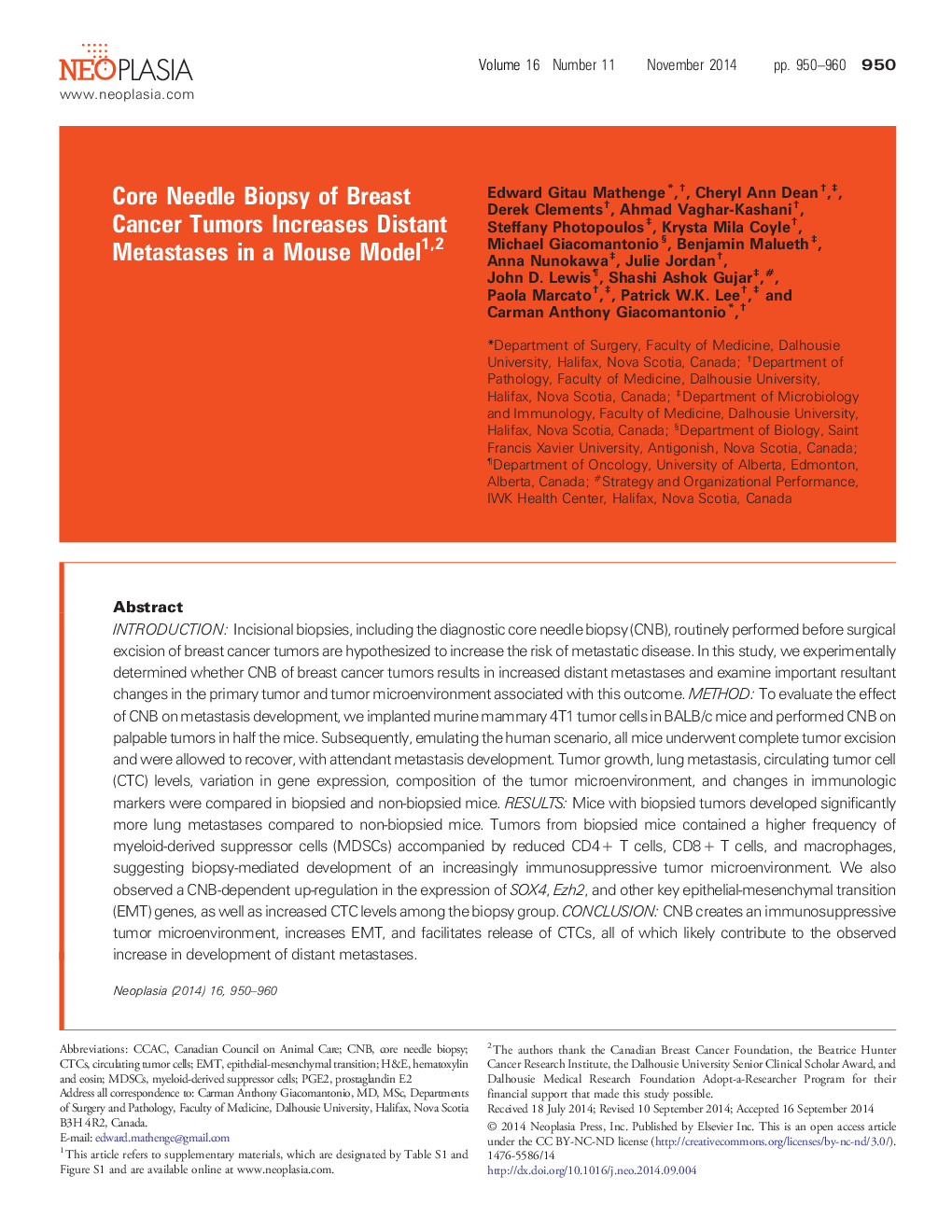| Article ID | Journal | Published Year | Pages | File Type |
|---|---|---|---|---|
| 2151259 | Neoplasia | 2014 | 11 Pages |
INTRODUCTION: Incisional biopsies, including the diagnostic core needle biopsy (CNB), routinely performed before surgical excision of breast cancer tumors are hypothesized to increase the risk of metastatic disease. In this study, we experimentally determined whether CNB of breast cancer tumors results in increased distant metastases and examine important resultant changes in the primary tumor and tumor microenvironment associated with this outcome. METHOD: To evaluate the effect of CNB on metastasis development, we implanted murine mammary 4T1 tumor cells in BALB/c mice and performed CNB on palpable tumors in half the mice. Subsequently, emulating the human scenario, all mice underwent complete tumor excision and were allowed to recover, with attendant metastasis development. Tumor growth, lung metastasis, circulating tumor cell (CTC) levels, variation in gene expression, composition of the tumor microenvironment, and changes in immunologic markers were compared in biopsied and non-biopsied mice. RESULTS: Mice with biopsied tumors developed significantly more lung metastases compared to non-biopsied mice. Tumors from biopsied mice contained a higher frequency of myeloid-derived suppressor cells (MDSCs) accompanied by reduced CD4 + T cells, CD8 + T cells, and macrophages, suggesting biopsy-mediated development of an increasingly immunosuppressive tumor microenvironment. We also observed a CNB-dependent up-regulation in the expression of SOX4, Ezh2, and other key epithelial-mesenchymal transition (EMT) genes, as well as increased CTC levels among the biopsy group. CONCLUSION: CNB creates an immunosuppressive tumor microenvironment, increases EMT, and facilitates release of CTCs, all of which likely contribute to the observed increase in development of distant metastases.
